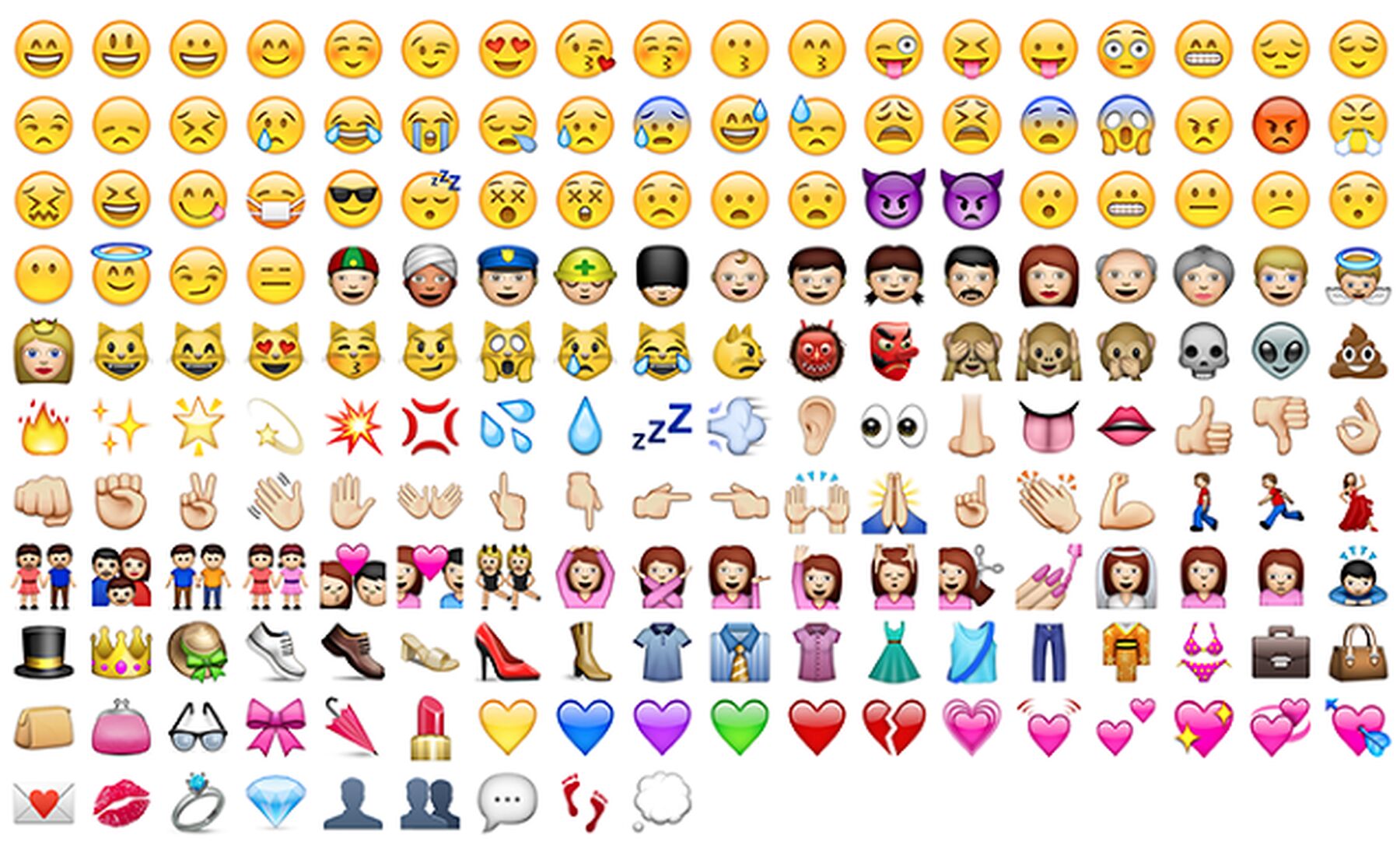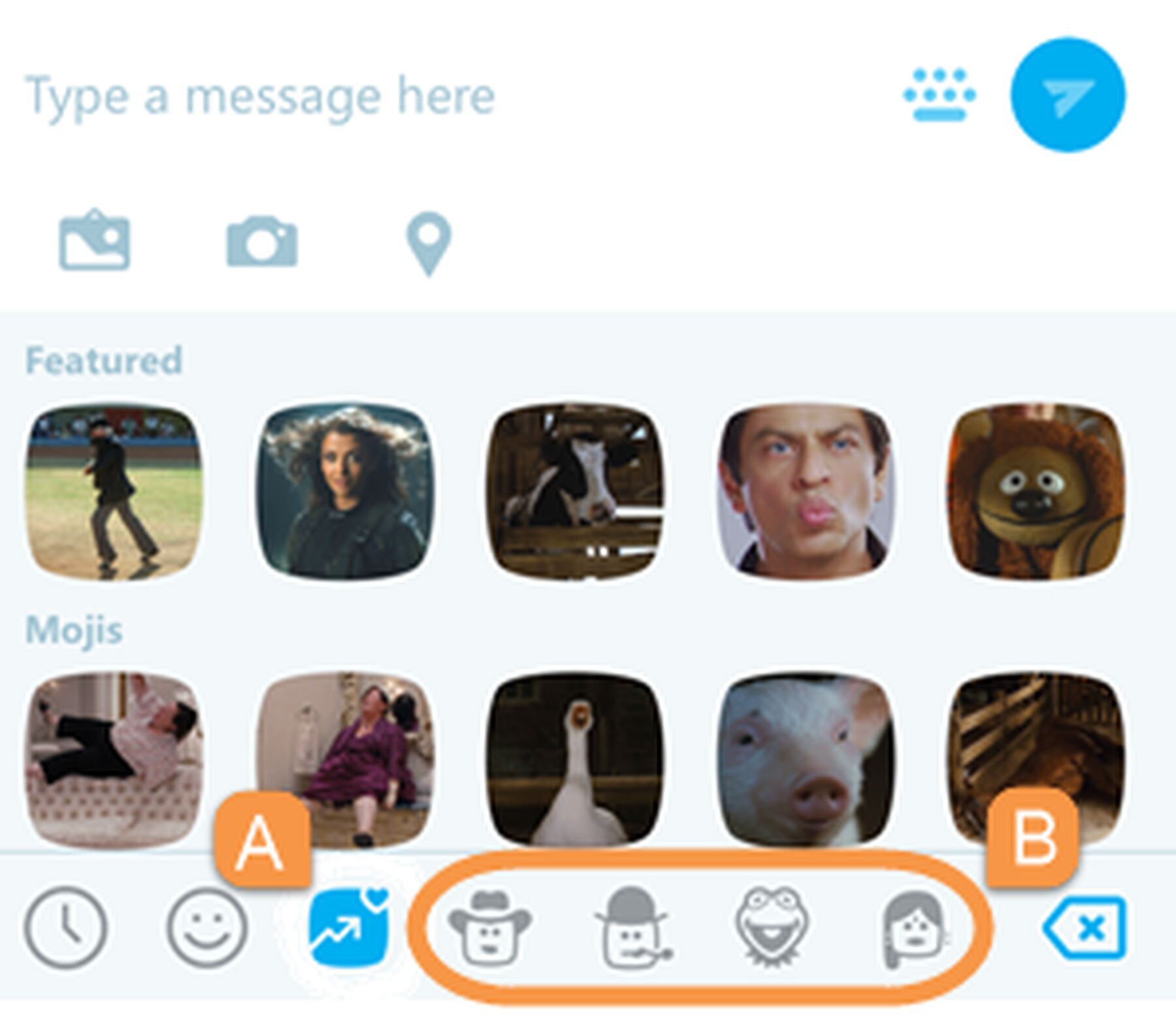For years now, people all around the world have been increasingly communicating with each other using emoji, a series of digital pictures and icons that convey a variety of ideas and concepts.

WhatsApp introduced them to the mainstream, but they work on other platforms too.

They are the offspring of the sometimes animated, sometimes still emoticons that those of us who were on the internet in the early 2000s would use to liven up our chats on MSN Messenger (while typing things like "ASL?" and using dial-up internet. And listening to Ja Rule. It was a dark time, okay?).
Skype has offered animated emoticons for years, and recently added short video clips called Mojis that function as reactions during conversation.
On Twitter, where the ever-popular GIF is overtaking photos as a means (memes?) of conversation, you can now access a "GIF keyboard" to find the perfect way to express yourself if words are just not cutting it.
The GIFs are coming! Get ready to search and send GIFs in Tweets and Direct Messages: https://t.co/uk75stt1zN pic.twitter.com/1dDD1B4CW2
— Twitter (@twitter) February 17, 2016
And more recently, Facebook has branched out from offering the simple "Like" response to friends' posts, and included a whole new range of "reactions".
This trend has prompted some to wonder if online communication will eventually become "post-language", or whether we should consider emoji as a language of their own. Look at just some of the interesting ways they are currently shaping human interaction online:
They're even being used to rewrite classic novels, explain evolution and win votes.
Getting emojinal
Mostly, the move towards a more pictorial way of conveying meaning enables a more genuine emotional interaction with fellow humans. Plain text is often bad at letting us know the tone and delivery of a word, and we lose all non-verbal cues, too: body language, hand gestures, reactions.
Emoji fill the gaps between words to help convey those non-verbal cues. Take the Oxford Dictionaries Word of the Year for 2015, for example. In response to a funny message, one might reply: "That's sooo funny!", "Hahaha", or "I am crying with laughter!"
Somehow, none of those convey the same emotion as the single emoji:

So what's next? Already, internet shorthand has bled into the real world, with words like "lol" "rofl" and "oh-em-gee" actually being said out loud in place of what they originally abbreviated. Here's a terrifying look at what this could mean for a future dominated by emoji-speak:
Of course, the tongue is very much in cheek in that video, and the truth is, linguists are quick to point out that emoji still lack a system of grammar, therefore dismissing claims that they can ever function as a language on their own.
As content producers who communicate with many online communities every day, emoji offer an opportunity to more richly sculpt the tone and voice of our clients' presence on social media. Personally, I like the way the BBC has integrated them into its news headlines on Facebook:
Touch down! #YearInSpace ����
Posted by BBC News on Tuesday, March 1, 2016
With Facebook's new range of "reactions" and the growing use of GIFs and emoji, the way we interact online will continue to change. Words will always be important, but we'll find new ways to make them even more meaningful.
Further reading:
